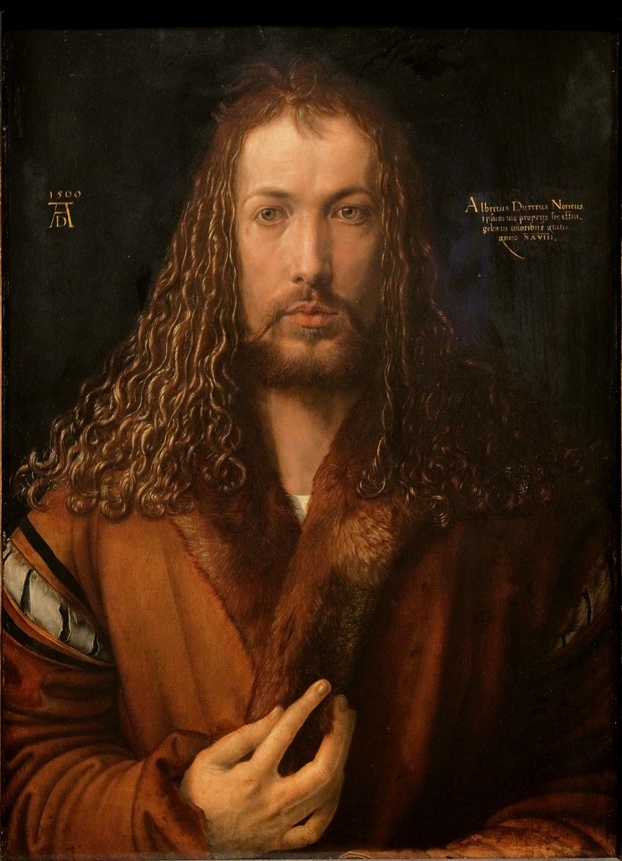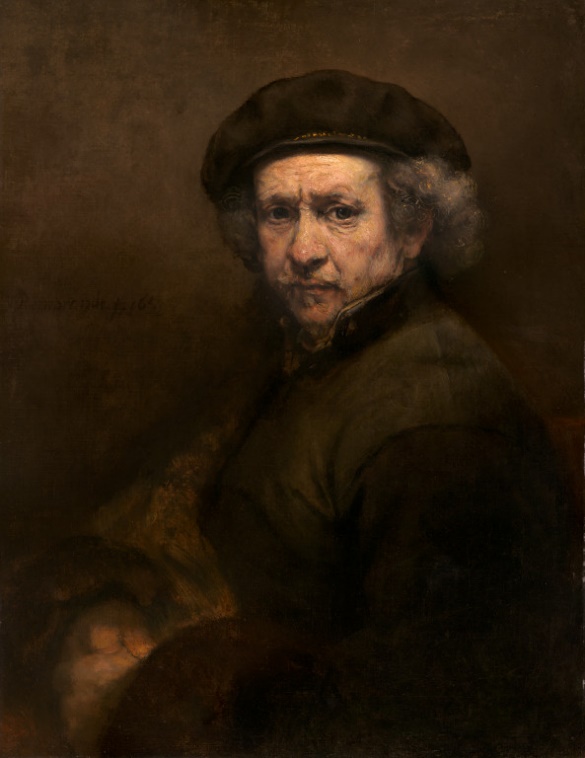Introduction
The art of self-portraiture allows artists to express their narratives, capturing their essence and identity. The Northern Renaissance’s Albrecht Dürer and the Dutch Golden Age’s Rembrandt van Rijn were two renowned artists who excelled in their respective eras. This article aims to analyze and differentiate Dürer’s “Self-Portrait at Age 28” and Rembrandt’s “Self-Portrait” by examining their styles, techniques, motivations, and the historical context in which they created their artwork.
Analysis of Self-Portraits
Dürer’s Self-Portrait

Dürer’s “Self-Portrait at Age 28” is a masterpiece that captures the artist’s technical skill and artistic identity during the Northern Renaissance, reflected in the use of meticulous details, symbolism, and composition that continue to inspire art enthusiasts today. This portrait is an oil painting on a wood panel that measures 67.1 x 48.3 cm (Art History Project). It was created in 1500 during the Northern Renaissance, and this period shifted towards individualism and humanism in art.
This self-portrait is one of three that Dürer produced, each reflecting different stages in his life and showcasing his technical prowess (der Alten Pinakothek and Imhoff). In this painting, Dürer employed a highly detailed and realistic approach, using meticulous shading and delicate brushstrokes to create an almost photographic representation of himself. His use of light and shadow is masterful, capturing the subtle nuances of his facial features and the texture of his hair and fur collar. This technique reflects the influence of Flemish artists such as Jan van Eyck and their attention to detail (der Alten Pinakothek and Imhoff).
Dürer’s self-portrait serves as both a representation of his physical appearance and a declaration of his artistic identity. His direct gaze and Christ-like pose exude self-confidence and assert his role as an artist. The portrait features symbolic elements, such as the monogram and the date, which emphasize the significance of the work. Moreover, the fur collar represents his social status and his success as an artist (der Alten Pinakothek and Imhoff). The painting showcases the artistry of the Northern Renaissance era, displaying the artist’s exceptional technical skills and self-assuredness.
Rembrandt’s Self-Portrait

Rembrandt’s “Self-Portrait” is an exceptional masterpiece that showcases the artist’s introspective nature and technical mastery, capturing the spirit and ambiance of the Dutch Golden Age. The painting is an oil on canvas painting measuring 84.5 x 66 cm (National Gallery of Art). It was produced during the Dutch Golden Age, which was marked by economic prosperity and a thriving art market. Rembrandt created numerous self-portraits throughout his career, providing a visual record of his life and artistic development (Mao).
Rembrandt’s painting technique in this self-portrait is characterized by his use of chiaroscuro, which employs strong contrasts between light and dark to create depth and dimension. His brushwork is looser and more expressive than Dürer’s, reflecting the Baroque style popular during the Dutch Golden Age. The artist’s focus on capturing the effects of light on his face and clothing contributes to the overall mood and atmosphere of the portrait (Mao).
In contrast to Dürer’s self-portrait, Rembrandt’s painting is less concerned with asserting his artistic identity and more focused on exploring the human condition. His introspective gaze and the subtle play of light and shadow on his face suggest a contemplative, introspective nature. The portrait also serves as a testament to Rembrandt’s skill as a painter, with his mastery of light and shadow on full display (Mao). The self-portrait offers insight into the artist’s personal life and creative evolution, demonstrating their proficiency in utilizing chiaroscuro and emphasizing their interest in delving into the complexities of the human experience.
Comparison
While both Dürer and Rembrandt demonstrated skill in using light and shadow, their approaches significantly differed. Dürer’s precise and detailed technique created an almost photographic representation of himself, while Rembrandt’s looser, more expressive brushwork emphasized the effects of light on his face and clothing. These differences can be attributed to the distinct artistic styles of the Northern Renaissance and the Dutch Golden Age, respectively (Spurr).
Dürer’s self-portrait underlines his individualism as an artist, highlighting his craftsmanship and integrating symbolic components to demonstrate his prominence. Conversely, Rembrandt’s self-portrait offers a more personal perspective, concentrating on the intricacies of human feelings and experiences, employing the subtle dynamics of light and shadow to evoke a sense of introspection and self-awareness (Spurr). Both Dürer and Rembrandt have left lasting legacies in the art world, with their self-portraits serving as iconic representations of their respective eras. Dürer’s “Self-Portrait at Age 28” is a testament to the humanism and individualism of the Northern Renaissance, while Rembrandt’s “Self-Portrait” embodies the Baroque style and introspective nature of the Dutch Golden Age.
Conclusion
In conclusion, Dürer and Rembrandt’s self-portraits offer valuable insight into their respective techniques, styles, motivations, and the historical contexts in which they created their works. Although both artists excelled in light and shadow, their approaches and objectives differed, reflecting the distinct artistic contexts of the Northern Renaissance and the Dutch Golden Age. Through a comprehensive analysis of these remarkable works of art, people can gain a deeper understanding of the distinct artistic achievements of each artist and the enduring influence of their self-portraits. Ultimately, the self-portraits of Dürer and Rembrandt serve as enduring examples of their mastery and continue to inspire artists and art lovers alike.
Works Cited
Art History Project. “Self-Portrait at Age 28.” Obelisk Art History, Web.
der Alten Pinakothek, Die Gemälde, and Nürnberger Patriziers Willibald Imhoff. “A little-known collector and the early reception of Dürer’s self-portraits.” the burlington magazine, vol. 162, 2020, p. 108.
Mao, Liping. “The Hidden Self in Self-portrait.” 7th International Conference on Arts, Design and Contemporary Education, 2021, pp. 147-151. Web.
National Gallery of Art. “Rembrandt Van Rijn.” Artist Info, Web.
Spurr, David. “Portraits of the Artist.” James Joyce and the Arts, 2020, pp. 23-39. Web.